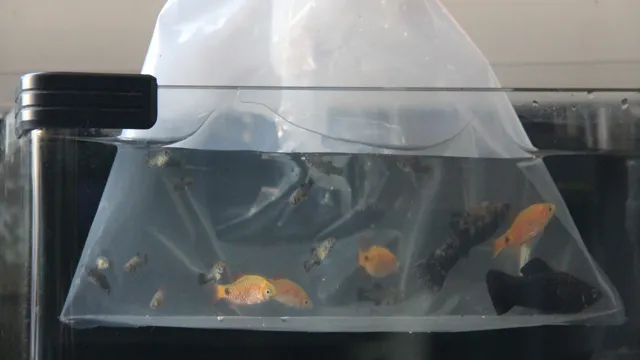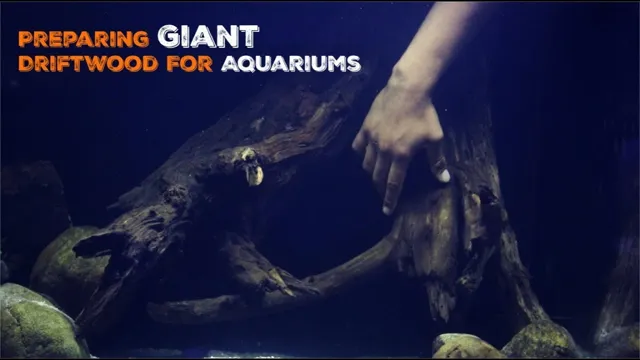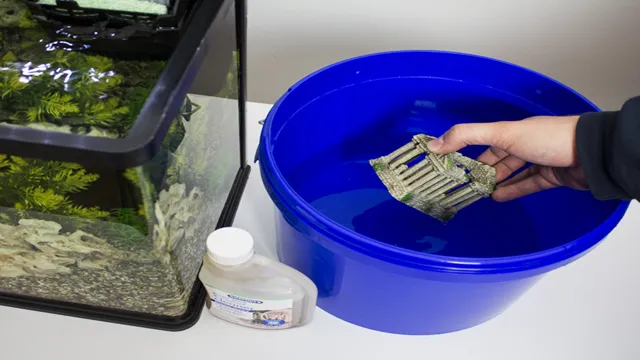How to Acclimate Fish to Aquarium: Tips and Tricks for a Smooth Transition

Bringing new fish into your aquarium can be exciting, but it’s important to acclimate them properly to ensure a smooth transition into their new home. Just like when we travel to a new place, fish can experience stress and shock when introduced to a new environment. However, with a few simple steps, you can ease their transition and help them thrive in their new surroundings.
In this blog, we’ll cover everything you need to know about acclimating fish to your aquarium, including why it’s essential, the steps to take, and how to spot signs of stress in your new fish. Whether you’re a seasoned fish owner or just starting out, this guide will help you give your new aquatic pets the best start possible.
Understanding the Importance of Acclimation
Acclimating your fish to their new aquarium is one of the most crucial steps in ensuring their survival and long-term health. A common mistake novice aquarium owners make is assuming that fish can simply be placed in their new environment without any adjustments. This can lead to stress, illness, and even death.
Proper acclimation involves slowly introducing your fish to their new surroundings by gradually adding small amounts of water from the aquarium to their transport bag or container, allowing them time to adjust to the temperature and water conditions of their new home. This process can take anywhere from 15 minutes to a few hours depending on the fish species and their sensitivity to sudden changes. By taking the time to properly acclimate your fish, you are giving them the best chance at a successful transition and a healthy life in their new aquarium.
Preventing Shock and Stress
Acclimation If you’re about to introduce a new pet to your home, it’s important to understand the importance of acclimation. Animals might experience shock and stress during the transition to a new environment, which could impact their health and behavioral patterns. The key is to gradually introduce them to their new surroundings.
For example, a new hamster could be placed in its cage inside the room for short periods at first, gradually increasing the duration over several days. Similarly, a new dog could be taken for short walks around the block, gradually increasing the area and exposure to other animals and people. This gradual introduction gives the pet time to adjust and reduces the chances of shock.
Remember, acclimation is crucial to ensure the health and wellbeing of your new pet, so take the time to do it right.

Slow and Steady Wins the Race
Acclimation When it comes to achieving goals, many of us are tempted to go all in right from the start. However, the old saying “slow and steady wins the race” holds true when it comes to acclimation. Whether you’re starting a new workout routine, adjusting to a new work environment, or trying to adapt to a new lifestyle, taking the time to acclimate is crucial.
Rushing into things too quickly can lead to burnout, injury, or even failure. Acclimation allows your body and mind to adjust gradually, reducing the risk of overwhelm and increasing the likelihood of success. Think of it like getting used to a new pair of shoes – you wouldn’t wear them for hours on end right away, but rather break them in slowly over time.
By practicing acclimation, you can set yourself up for sustainable progress over the long haul.
Preparing for Acclimation
Acclimating fish to their new aquarium is an important process that can help ensure their long-term health and survival. Before introducing new fish to your aquarium, it is essential to prepare your tank for their arrival. This includes checking the water conditions, ensuring that the temperature of the tank is appropriate for the fish species, and adding any necessary decorations or hiding places.
Once the tank is ready, you can begin the acclimation process by slowly introducing the fish to their new environment. This can be done by gradually adding small amounts of water from the tank to the bag or container that the fish are in, in order to help them adjust to the new water chemistry and temperature. Additionally, it is important to monitor the fish closely during the acclimation process to ensure that they are healthy and adapting well to their new home.
By taking these steps, you can ensure that your new fish have a smooth and stress-free transition into their new aquarium.
Gather Necessary Supplies
When preparing for acclimation, it’s important to gather all necessary supplies beforehand. This includes everything from a suitable tank or terrarium, to the proper lighting and heating equipment, and even bedding and food for your new pet. Make sure to research the specific needs of your chosen animal beforehand, to ensure you have everything they require to thrive.
It’s also a good idea to have a quarantine area set up for your new pet, in case they need to be isolated for any reason. By being well-prepared, you can help to minimize stress and ensure a smooth and successful acclimation period for your new pet.
Turn Off the Lights
If you’re planning to introduce new lighting to your home, whether it’s a different lamp or a completely new lighting system, it’s best to start with acclimation. Turning off the lights can be really helpful and act as a reset button. Give a day or two without really using your old lights or turning on the new ones.
You will be amazed at how much your eyes and brain will adjust to new light sources. It will also help you determine the changes you want to make and prepare the room for the best light possible. This can be a little uncomfortable especially if you’re used to a particular light level in your space, but it’s an important step for a successful transition.
Over time, you’ll get used to the new lighting and you won’t even notice it. So, whether you’re trying to save energy or create the perfect ambiance in your living space, acclimation is the key to success.
The Acclimation Process
Acclimating fish to a new aquarium is an important process that requires patience and attention to detail. It’s important to gradually introduce the fish to their new home, as abrupt changes in water temperature and chemistry can be harmful to their health. One key step in the acclimation process is to float the fish in their bag on the surface of the aquarium water for about 15-20 minutes to gradually equalize their temperature with the water in the tank.
After this, slowly add small amounts of tank water to the bag over the course of 30-45 minutes, allowing the fish to adjust to the new water chemistry. Once the fish have acclimated to the tank water, gently release them into the aquarium and observe them for any signs of stress or illness. By taking the time to properly acclimate your fish, you can help ensure they thrive in their new environment for years to come.
Float the Bag
When introducing new fish into an aquarium, it’s important to take the time to properly acclimate them to their new environment. One popular method for acclimation is called “floating the bag.” This involves placing the bag containing the fish into the aquarium, and then gradually adding small amounts of aquarium water to the bag over the course of about 30 minutes.
This allows the fish to adjust to the new temperature, pH, and other factors in the water, without experiencing too much stress. It’s a good idea to closely monitor the fish during this process, and to refrain from feeding them until they’ve fully acclimated. By taking the time to properly acclimate new fish, you can help ensure that they thrive in their new home and avoid unnecessary stress or illness.
Remember, patience is key!
Introduce Tank Water Slowly
Acclimating fish to a new tank is an essential step that should not be rushed. One of the key factors to consider is the introduction of tank water into the fish’s new environment slowly. Fish are highly sensitive creatures; they require time to adjust to changes in their environment.
Sudden alterations can cause stress, which can lead to illness and even death. The acclimation process involves gradually introducing tank water into the container where the fish are stationed. This technique enables the fish to adjust better, allowing them to grow accustomed to the new water conditions at their own pace.
Take time and make sure the fish have the proper environment, and use all necessary steps in introducing them to the new habitat. Patience and care are the keys to fish captivity success.
Repeat Over 30-60 Minutes
The acclimation process is crucial for allowing your body to adjust and adapt to new physical activity or environmental conditions. Whether you are increasing the intensity of your workout routine or traveling to a location with different temperatures and altitudes, the key to a successful acclimation is repeating the process over 30 to 60 minutes. This means gradually increasing the intensity of your activity, giving your body time to acclimate to the changes.
Similarly, if you are in a new environment, spending time in that environment for longer periods can help your body adapt more quickly. It’s like diving into a cold pool- you don’t jump in headfirst, but rather ease your way in, allowing your body to adjust to the temperature. By repeating the acclimation process, you can avoid potentially harmful side effects and allow your body to perform at its best.
Release Your Fish with Care
One of the key aspects of maintaining a healthy aquarium is learning how to acclimate your fish properly. Often, fish are transported across great distances and undergone a lot of stress before they even reach their new home. This can make them more vulnerable to disease and other complications.
Thankfully, acclimation is an easy process that can be done with just a few simple steps. Start by carefully introducing your fish to the temperature of the new water, gradually adding small amounts of new water to the bag over a period of time. Once the fish have adjusted to the temperature, you can release them with care.
Be sure to release them slowly and let them swim out of the bag on their own. This will reduce the likelihood of any damage being done to their delicate fins or scales. Remember, taking the time to acclimate your fish can make all the difference in maintaining a healthy and thriving aquarium.
Conclusion
In conclusion, acclimating fish to a new aquarium is like introducing them to a new neighborhood – it takes time for them to adjust and feel at home. By slowly introducing them to the new water conditions, temperature, and environment, you can help them transition smoothly and prevent any shock or stress. So, don’t rush the process – take it slow and steady, and your fish will thank you with their happy and healthy behavior.
“
FAQs
Why is it important to acclimate fish to an aquarium?
Acclimating fish to an aquarium helps reduce the stress on the fish from sudden changes in water chemistry and temperature, and allows them to adjust to their new environment gradually.
How long should the acclimation process take?
The acclimation process should take at least 30 minutes to an hour to ensure a smooth and gradual transition for the fish.
What tools do I need for the acclimation process?
The tools you will need for acclimation include a bucket, aquarium water, a net, and an airline tubing or drip acclimation kit.
How do I acclimate fish using the drip method?
The drip method involves slowly introducing tank water into the bag of fish using airline tubing attached to a bucket or container filled with aquarium water, creating a slow drip.
Can I acclimate fish directly from the pet store bag?
No, it is not recommended to acclimate fish directly from the pet store bag. The water in the bag may have different chemistry and temperature than your aquarium, causing stress or shock to the fish.
What should I look out for during the acclimation process?
Watch for any signs of distress or illness during the acclimation process, such as labored breathing, lethargy, or abnormal behavior. If any issues arise, slow down the acclimation process or seek veterinary advice.
Do all fish species require the same acclimation process?
No, different fish species may require different acclimation processes based on their water chemistry and temperature preferences. Research the specific needs of your fish before acclimating them to your aquarium.






